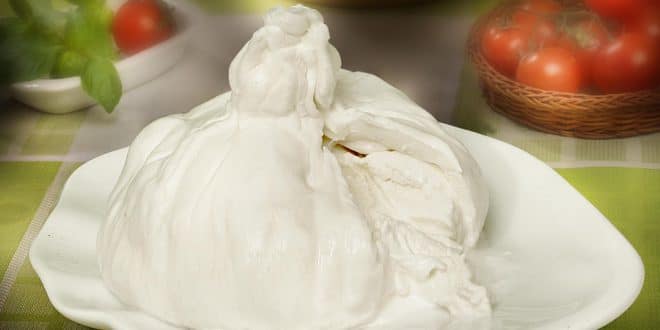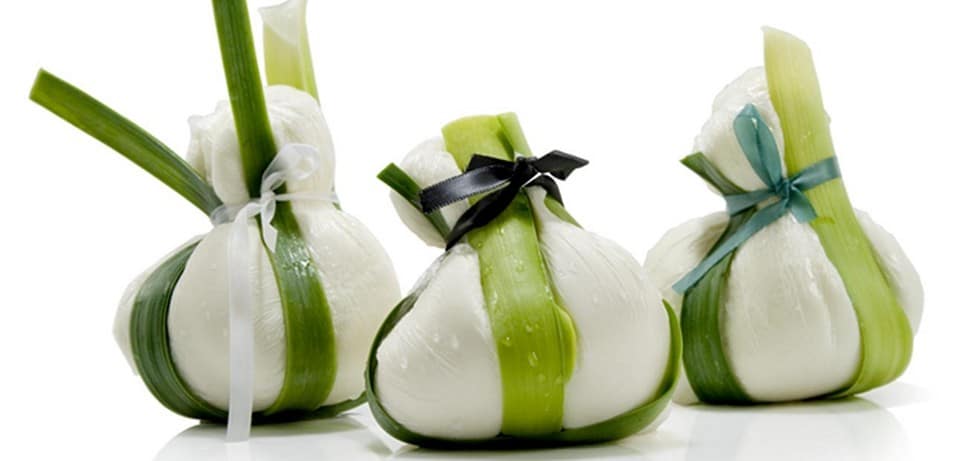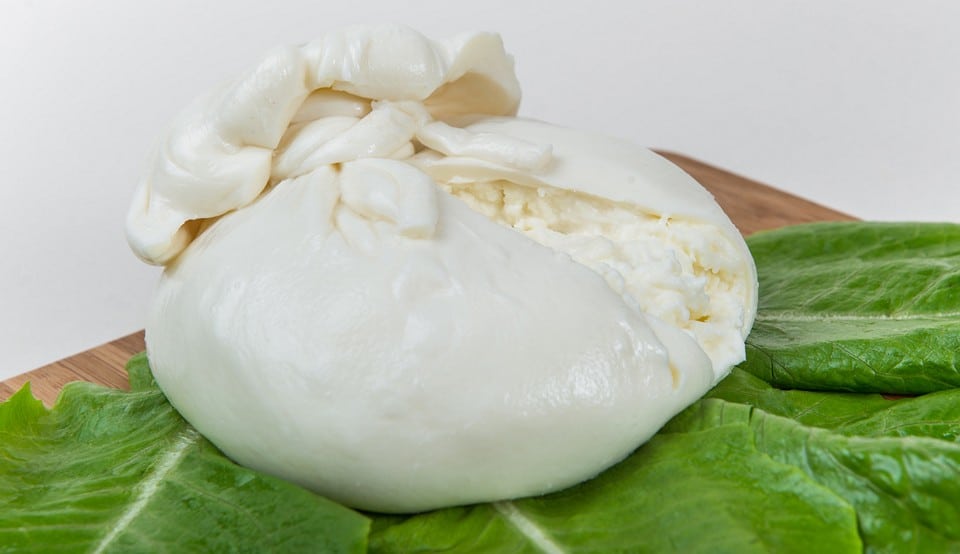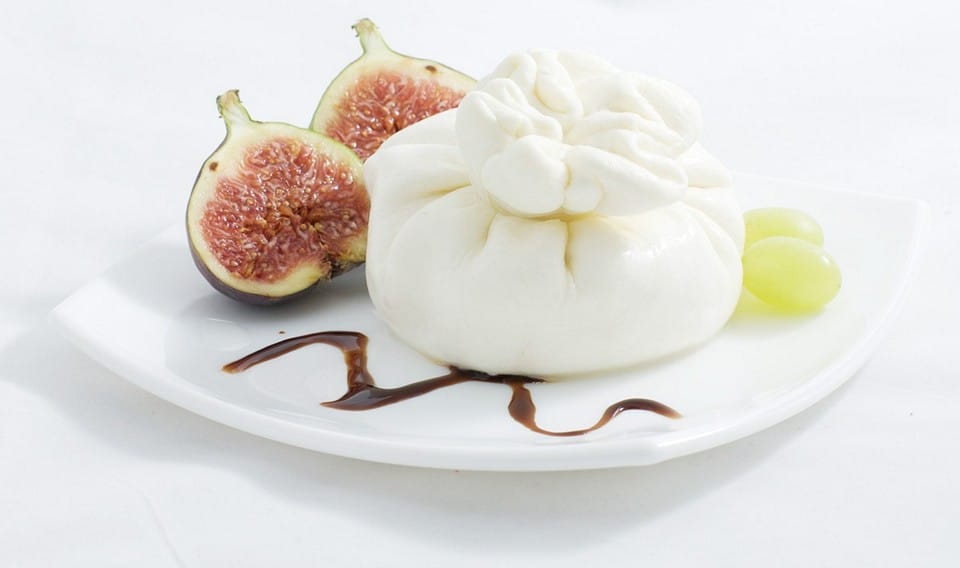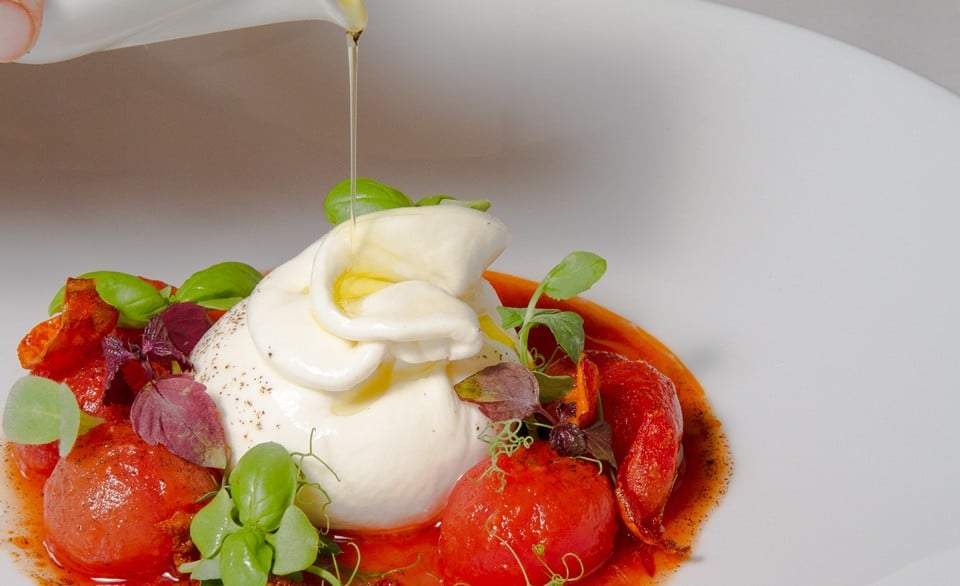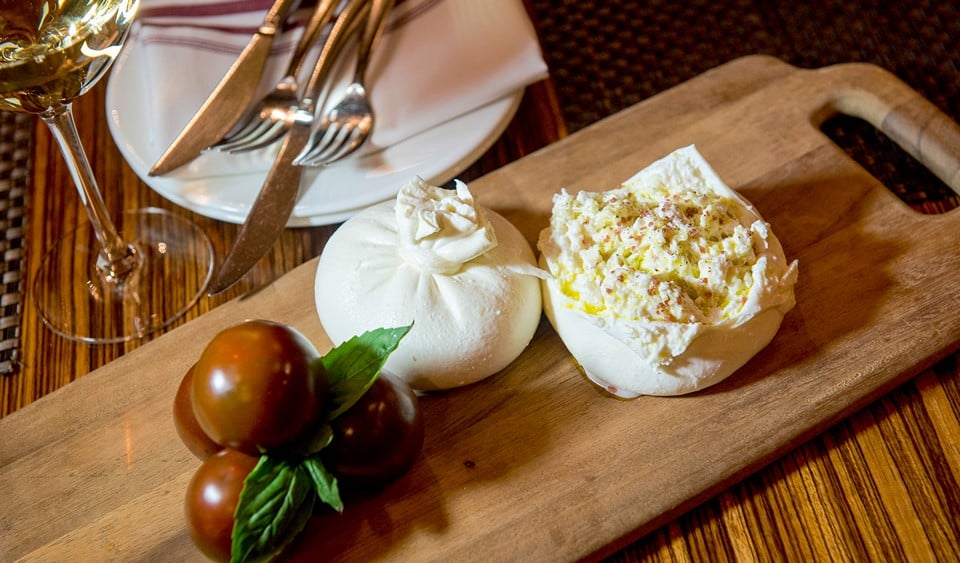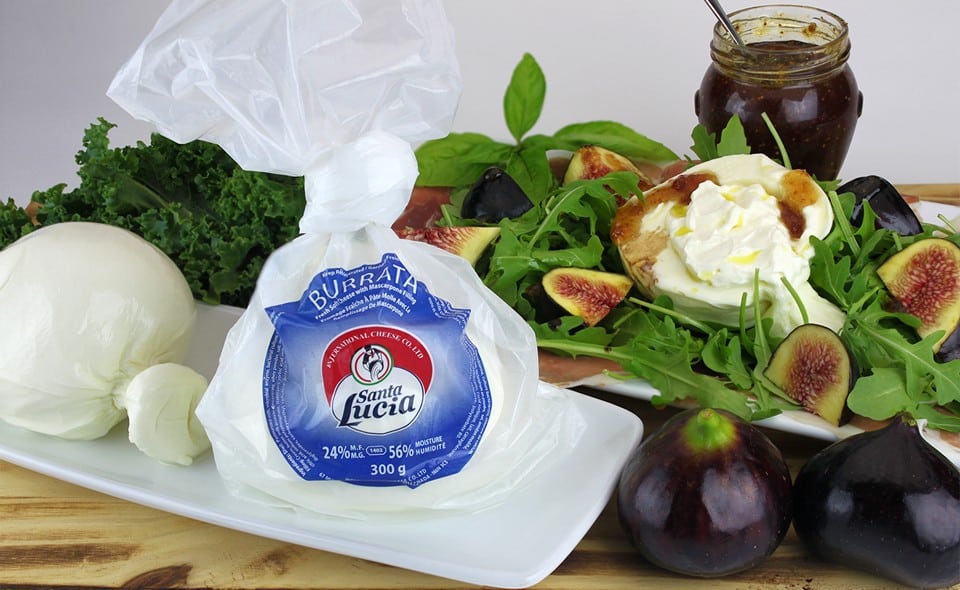Burrata is an Italian cheese that combines the flavors of mozzarella and cream. Its name comes from the word “burro,” which means “butter.” Each ball of Burrata consists of a pouch made of mozzarella filled with a creamy filling. While Burrata does not boast a rich history, it does have several interesting facts to share.
Page Contents
Origin and History
The birthplace of Burrata is the southern Italian plateau of Murgia. The cheese’s history began in 1920 (according to some sources, in 1900) in the city of Andria. The Bianchini family first made it on their farm, and for 30 years, the cheese delighted only the local residents.
The invention of the recipe was a result of the typical rural tradition of reusing excess from cheese production. The idea was to mix remnants from the production of “Pasta Filata” cheese with cream and wrap it in a mozzarella pouch.
The popularity of this cheese in Italy grew in the 1950s after some dairies started producing and promoting it in the market. Although the cheese was made from “trimmings” (ritagli) of mozzarella, it was marketed as a premium product.
Today, Burrata is handcrafted by highly skilled artisans. As a result, the flavors of the cheese produced in different factories may vary.
Burrata gained significant popularity on the East Coast of the United States, where many Italian Americans reside.
Production Process
The cheese is made from cow and buffalo milk and cream in the regions of Apulia, Campania, and Basilicata.
The initial stage is no different from the production of other cheeses. Warm milk is coagulated by adding rennet. The resulting curd is then immersed in hot brine or whey. The mass is stirred and stretched to form elastic strands characteristic of “Pasta Filata” cheeses. The cheese is then shaped accordingly.
The hot balls are molded into pouches and filled with a mixture of cream and pieces of mozzarella. The finished Burrata is traditionally wrapped in asphodel leaves, with the top tied and moistened with whey. Asphodelis a flower that grows wild in southern Italy and imparts a special aroma to the cheese.
Currently, there are three companies in Italy that produce Burrata:
- Cooperativa Caseificio Pugliese
- Azienda Cordisco
- Azienda Agricola Querceta
How to properly eat and store
Burrata is a soft, delicate cheese with a creamy, fresh taste. It comes in a white porcelain-like pouch with a creamy filling. The weight of one serving of cheese varies from 250 to 500 grams (8.8 to 17.6 ounces).
Burrata is best enjoyed as fresh as possible. It is preferable to consume it within 24-48 hours. After two days from the time it was made, it is considered not as young but still edible. However, there may be a slight smell of sour milk.
Before serving, it is necessary to take the cheese out of the refrigerator and let it reach room temperature. This way, it will fully develop its flavor notes and acquire the desired consistency.
Burrata is typically eaten on its own, sprinkled with salt and black pepper, drizzled with olive oil, or scooped up with a slice of bread or cracker to gather the creamy filling. In Italy, like mozzarella, it is served with fresh tomatoes and basil or grilled vegetables.
The cheese is also used as a delicious pizza topping. It should be added to the pizza towards the end of the baking process, so it becomes warm and soft but not too watery.
Burrata pairs well with a variety of ingredients, including arugula, avocado, legumes, beets, garlic, honey, lemon, melon, peaches, and nuts.
Nutritional Value and Benefits
The calorie content of the cheese directly depends on the composition of the filling. Currently, there are numerous variations available, such as with ricotta, blackberries, black truffle, and so on.
Let’s take the example of the nutritional value of 100 grams (3.5 ounces) of it with the classic filling (cream and mozzarella):
- Calories: 321 kcal
- Protein: 18 grams
- Fat: 25 grams
- Carbohydrates: 0 grams
- Cholesterol: 20 mg
- Sodium: 85 mg
- Vitamin A: 36 mcg
- Calcium: 150 mg
Burrata is a relatively high-calorie product, so its consumption should be proportional to your diet’s overall intake.
Like all dairy products, burrata is an excellent source of calcium, which is involved in bone and muscle formation and nerve impulse transmission.
By consuming 30 grams (1 ounce) of cheese, you provide your body with approximately 16% of the daily recommended intake of calcium, 5% of vitamin A, and 4% of sodium.
Homemade Burrata:
Making Burrata at home is a relatively simple process. All you need is milk, rennet, citric acid, cream for filling, and some culinary skills.
The preparation process is as follows:
- Dissolve 7g of citric acid in 200ml of cold water and 2 teaspoons of rennet in 100ml of water.
- Mix the milk with the citric acid solution and slowly heat it to 33-37 degrees Celsius.
- Remove the pot from the heat, add the rennet, stir, and let it sit for 30 minutes to form curds.
- Cut the curds into small cubes (approximately 2×2 cm), and while stirring gently, heat the contents of the pot to 35 degrees Celsius.
- Strain the contents through a sieve lined with several layers of cheesecloth.
- Break one half of the curd into small pieces and mix it with cream.
- In a separate pot, heat water to 80 degrees Celsius and place the other half of the curd in it.
- Once the curd becomes stretchy, remove it from the water and stretch it several times.
- Roll out the cheese to a thickness of approximately 1 cm (with a diameter of 18-20 cm). Fill it with the creamy mixture and tie it.
Fresh homemade Burrata is ready for you. Remember to consume it immediately.
Price in Italy and the USA:
Burrata, being less common than its sibling Mozzarella, is slightly higher in price.
- In Italy, you can buy Burrata with a classic filling for around 7-9 Euros per 500g.
- In the eastern states of the USA, where Burrata is highly popular, you can find it for around $10, although higher-quality options may cost around $12 for 500g.
Our overview of this Italian delicacy is complete. Now you have one more great reason to visit Italy, don’t you? Live with taste and remember, “Burrata is not far from Mozzarella!”
Interesting Facts about Burrata
- Burrata, a luxurious Italian cheese, originated in the Puglia region in the early 20th century. Its name “burrata” means “buttery” in Italian, perfectly describing its luscious texture.
- Unlike other cheeses, Burrata is made from mozzarella curds that are stretched and formed into a pouch. The pouch is then filled with a combination of cream and more mozzarella curds, resulting in a creamy and decadent center.
- The outer shell of Burrata is a delicate and thin layer of mozzarella, giving it a fresh and milky taste. When cut, the creamy interior oozes out, creating a visually stunning and appetizing presentation.
- Burrata is best enjoyed when it is fresh. Its soft and creamy texture pairs beautifully with ripe tomatoes, fresh basil, and a drizzle of high-quality extra virgin olive oil, creating a classic and irresistible Caprese salad.
- Burrata is a versatile cheese that can be used in a variety of dishes. It can be sliced and served on bruschetta, melted into pasta dishes, or incorporated into risottos and pizzas, adding a luxurious and creamy element.
- Due to its short shelf life, Burrata is often handmade in small batches by skilled cheesemakers. This artisanal approach ensures the highest quality and preserves the delicate flavors and textures that make Burrata so special.
- Burrata has gained popularity worldwide and has become a favorite among cheese connoisseurs. Its unique combination of textures, from the creamy interior to the delicate outer shell, offers a truly indulgent and unforgettable experience.
 Italy for me From Italy with love
Italy for me From Italy with love

